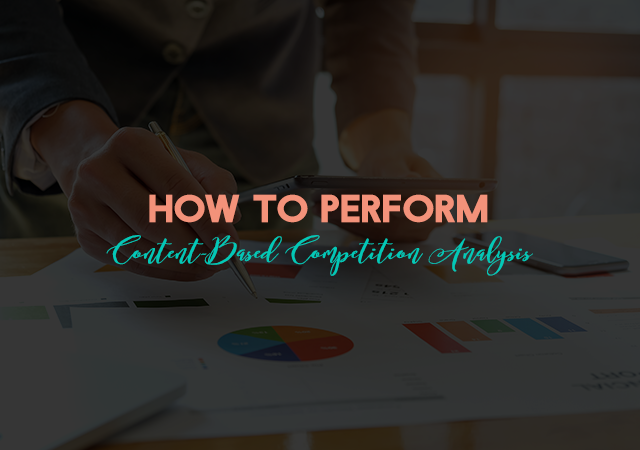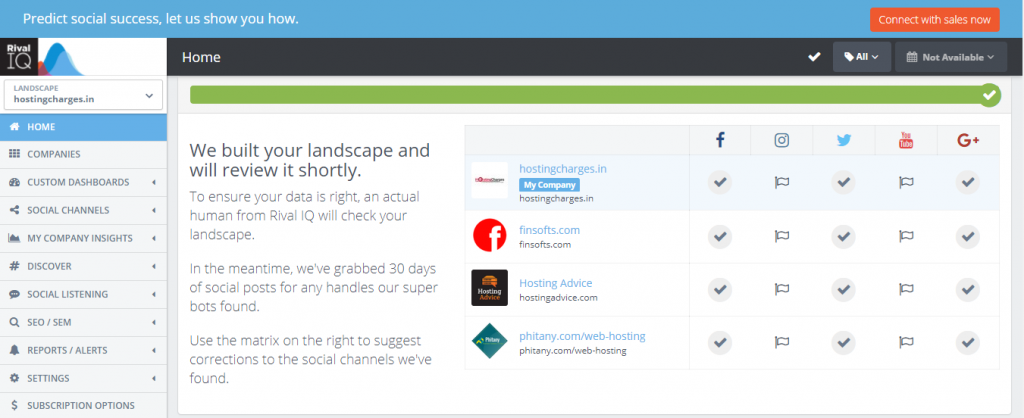
“You can’t look at the competition and say you’re going to do it better. You have to look at the competition and say you’re going to do it differently.” ~ Steve Jobs
Competition can be grueling. It can take away your business, starve your sales funnel and turn your bottom line to a deep red. Of course, as inbound marketers, we do tons of competitive analysis and research to find out what our competitors are offering and how to outwit them.
But, if you think deeper, what we really have to do is find what they are doing and what they are offering, especially with respect to content. A content-based competition research can help unearth staggering facts about the competition and sharpen the efficiency of your content marketing strategy. Content-based competition analysis will prove to be beneficial even if you are neck-deep into content marketing or just getting started with content marketing.
Here are 3 steps to get started with content-based competition analysis.
You can find out who your competitors are by running a basic Google search. Search for primary keywords that your business is targeting to rank higher. You can either look for businesses in the same industry as you or those that provide similar products/services that are relevant for your audience.
Note your observations for the following questions:
Answers to these questions will help you get started. Next is using your findings for a more deeper analysis.
Every competitor will rely on some form of content or marketing collateral to make inbound marketing work for them. For some, it could be blogs, press releases, guest posts while for others it could be gated content like white paper, case studies, etc.
Identify the topics they usually cover, where their content is hoarded and how they use it across the Internet. Trace backlinks to these posts to know how they are steering their SEO strategy.
Every business that uses inbound marketing follows a marketing calendar. They have a frequency based on which they create blogs, approach for press releases, publish videos/podcasts and so on. This frequency is always fine-tuned to the best times to reach their target audience, which also would be more or less similar to your target audience. Capturing the frequency at which content is published will help you map out your competition’s content strategy
Each form of content would have its own unique strength and ability to connect with audiences. They also have distinct conversion capabilities. Let’s see how you can do a content-based competition analysis for each form of content.
According to HubSpot, 53% of marketers say blog content creation is their top inbound marketing priority. Customers trust those brands which publish branded blog content on a regular basis. Blogging helps create a unique brand voice that can connect with customers smoothly.
To know how your competitors are using blogs to their advantage, observe:
Seek for answers to these questions. They will help you figure out how best you can use blogging to your advantage.
Even in the age of social media and push notifications, email still remains a surefire way to reach customers where they never miss to check – in their inboxes. But, running an email marketing campaign is no easy task. Not all industries enjoy impressive open rates. You should plan your campaigns properly to get maximum ROI.
Perhaps, if you observe the following pointers from your competitors, it will help you sharpen your competitive advantage. It would be best to sign up to for their email updates, so you’ll have first hand information for your analysis.
Content used to be just textual and graphical content. But with time, multimedia formats like podcasts and videos have also have grown in popularity. The reason is plain and simple. Multimedia content enjoys a higher engagement than any other form of content.
Here is how to do a content audit of your competitors’ multimedia content:
The benefit of crafting your own way of using multimedia is that they fall under the category of evergreen content. They can be reused several times across multiple channels without the risk of plagiarism.
The number of active social media channels keeps growing each year. But you cannot neglect the amount of attention it garners.
Make a list of all the social media channels where your competitors have maximum audience engagement. Then, find their content strategy across the main social media networks that apply for your business – Facebook, Twitter, Instagram, LinkedIn and Pinterest.
Measuring your competition’s fan following or social presence can help you devise your own social content strategy. For instance, if your competitor could be tweeting thrice a day, but playing it weak on Facebook. It means you have an opportunity to leverage their absence and build momentum on Facebook.

Rival IQ is an online tool that can help you analyze your competitors’ social media profiles. For more tools to help you perform content based competition analysis, be sure to check out our article in the Learning Hub: 30 Crafty Online Tools to Help you Spy on the Competition.
The final step in making your findings worth the time and effort is in putting them to practice. Measuring your current stand as compared to your competitors give you a heads-up on what you must be doing next.
Identify channels where you are lagging behind and start fixing those places. If you have areas of strengths better than your competitors, leverage them to attain a competitive advantage.
Sometimes, a well-written blog can go viral and give your brand much publicity than trying hard to increase followers in social channels. You have to pick and choose what will work for your content marketing efforts and improvise on it.
And, don’t forget to monitor it on a regular basis.
I’ve converted this article into a worksheet that you can work through at your own pace. You get this worksheet and many more free resources when you sign up for our Learning Hub!
Get ready to take your business to the next level. Lots of free resources, worksheets and eBooks to help you get started.